第46章 ON CORAL AND CORAL REEFS [110](1)
The marine productions which are commonly known by the names of "Corals" and "Corallines," were thought by the ancients to be sea-weeds, which had the singular property of becoming hard and solid, when they were fished up from their native depths and came into contact with the air.
"Sic et curalium, quo primum contigit auras Tempore durescit: mollis fuit herba sub undis,"[111]
says Ovid (Metam. xv); and it was not until the seventeenth century that Boccone [112] was emboldened, by personal experience of the facts, to declare that the holders of this belief were no better than "idiots," who had been misled by the softness of the outer coat of the living red coral to imagine that it was soft all through.
Messer Boccone's strong epithet is probably undeserved, as the notion he controverts, in all likelihood, arose merely from the misinterpretation of the strictly true statement which any coral fisherman would make to a curious inquirer; namely, that the outside coat of the red coral is quite soft when it is taken out of the sea. At any rate, he did good service by eliminating this much error from the current notions about coral. But the belief that corals are plants remained, not only in the popular, but in the scientific mind; and it received what appeared to be a striking confirmation from the researches of Marsigli [113] in 1706. For this naturalist, having the opportunity of observing freshly-taken red coral, saw that its branches were beset with what looked like delicate and beautiful flowers each having eight petals. It was true that these "flowers" could protrude and retract themselves, but their motions were hardly more extensive, or more varied, than those of the leaves of the sensitive plant; and therefore they could not be held to militate against the conclusion so strongly suggested by their form and their grouping upon the branches of a tree-like structure.
Twenty years later, a pupil of Marsigli, the young Marseilles physician, Peyssonel, conceived the desire to study these singular sea-plants, and was sent by the French Government on a mission to the Mediterranean for that purpose. The pupil undertook the investigation full of confidence in the ideas of his master, but being able to see and think for himself, he soon discovered that those ideas by no means altogether corresponded with reality. In an essay entitled "Traite du Corail," which was communicated to the French Academy of Science, but which has never been published, Peyssonel writes:--"Je fis fleurir le corail dans des vases pleins d'eau de mer, et j'observai que ce que nous croyons etre la fleur de cette pretendue plante n'etait au vrai, qu'un insecte semblable a une petite Ortie ou Poulpe. J'avais le plaisir de voir remuer les pattes, ou pieds, de cette Ortie, et ayant mis le vase plein d'eau ou le corail etait a une douce chaleur aupres du feu, tous les petits insectes s'epanouirent.--L'Ortie sortie etend les pieds, et forme ce que M.
de Marsigli et moi avions pris pour les petales de la fleur. Le calice de cette pretendue fleur est le corps meme de l'animal avance et sorti hors de la cellule."*[114]
* This extract from Peyssonel's manuscript is given by M. Lacaze Duthiers in his valuable Histoire Naturelle du Corail (1866).
The comparison of the flowers of the coral to a "petite ortie," or "little nettle," is perfectly just, but needs explanation. "Ortie de mer," or "sea-nettle," is, in fact, the French appellation for our "sea-anemone," a creature with which everybody, since the great aquarium mania, must have become familiar, even to the limits of boredom. In 1710, the great naturalist, Reaumur,[115] had written a memoir for the express purpose of demonstrating that these "orties"are animals; and with this important paper Peyssonel must necessarily have been familiar. Therefore, when he declared the "flowers" of the red coral to be little "orties," it was the same thing as saying that they were animals of the same general nature as sea-anemones. But to Peyssonel's contemporaries this was an extremely startling announcement. It was hard to imagine the existence of such a thing as an association of animals into a structure with stem and branches altogether like a plant, and fixed to the soil as a plant is fixed; and the naturalists of that day preferred not to imagine it. Even Reaumur could not bring himself to accept the notion, and France being blessed with Academicians, whose great function (as the late Bishop Wilson [116] and an eminent modern writer [117] have so well shown) is to cause sweetness and light to prevail, and to prevent such unmannerly fellows as Peyssonel from blurting out unedifying truths, they suppressed him; and, as aforesaid, his great work remained in manuscript, and may at this day be consulted by the curious in that state, in the Bibliotheque du Museum d'Histoire Naturelle. Peyssonel, who evidently was a person of savage and untameable disposition, so far from appreciating the kindness of the Academicians in giving him time to reflect upon the unreasonableness, not to say rudeness, of making public statements in opposition to the views of some of the most distinguished of their body, seems bitterly to have resented the treatment he met with. For he sent all further communications to the Royal Society of London, which never had, and it is to be hoped never will have, anything of an academic constitution; and finally he took himself off to Guadaloupe, and became lost to science altogether.
Fifteen or sixteen years after the date of Peyssonel's suppressed paper, the Abbe Trembley [118] published his wonderful researches upon the fresh-water Hydra. Bernard de Jussieu [119] and Guettard [120]